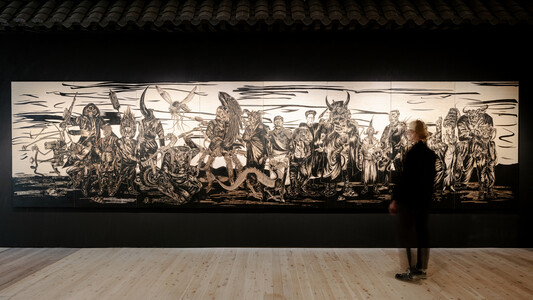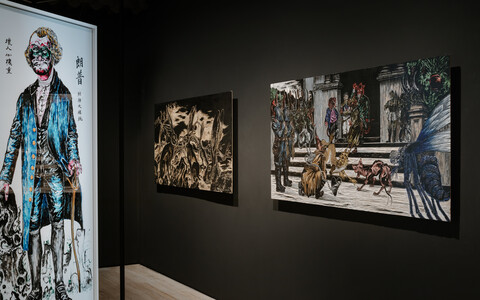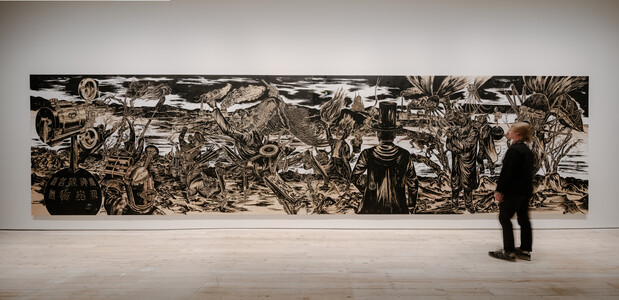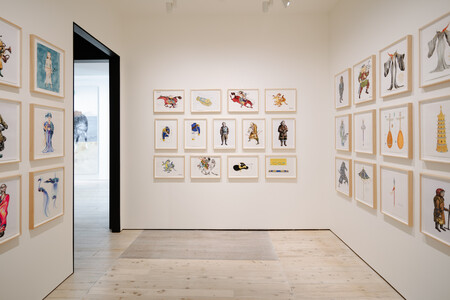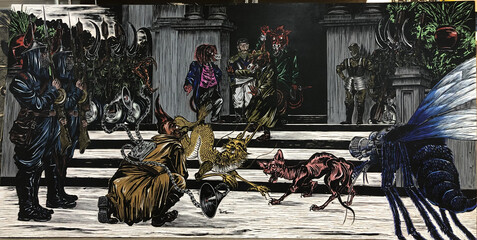Group Exhibition White Rabbit Gallery, Sydney, Australia
When wandering through the streets of imperial China, amidst bazaars and teahouses, one might stumble across the figure of a storyteller. Crowds gather around this lone narrator, whose tales of mystical beasts, warriors, and immortals, infuse the air with enchantment. Yet in recent years Shuo Shu, or the art of storytelling, has become a dying tradition. Contemporary Chinese audiences have instead turned their attention to digital content.
Before the age of web fiction and e-readers, the history of the written word in China dates back over 4000 years. In ancient times oracle bones were used for divination by Shang Dynasty emperors and engraved with the oldest known form of Chinese script. From bone to bamboo, wood, stone, silk, and tortoise shells – calligraphy was once inscribed upon various materials. Until one day a Chinese eunuch named Cai Lun, who served the Han court, was attributed with the invention of paper. Paper became print when a Chinese copy of the Diamond Sutra was recognised as the world’s oldest printed book. And one thousand years later, Mao’s ‘Little Red Book’ came second to the bible as the most printed book on earth.
The artists in ‘Shuo Shu’ map the evolution of the story from timeless myths and literary romances to modern-day social criticism. Artists become shapeshifters, and their stories twist and turn to fit within codes and secret messages. Whilst a closed mind is like a closed book, stories reveal themselves to those who are open.
More Pictures:


